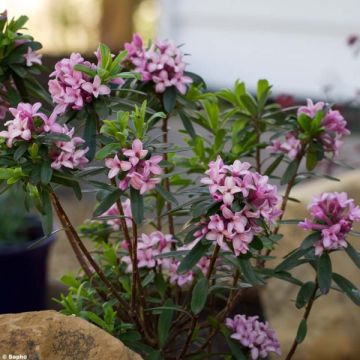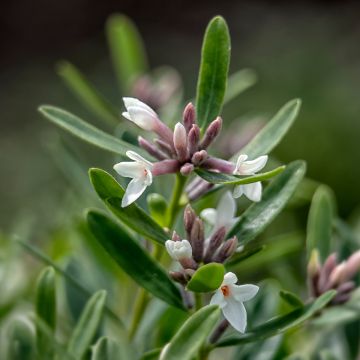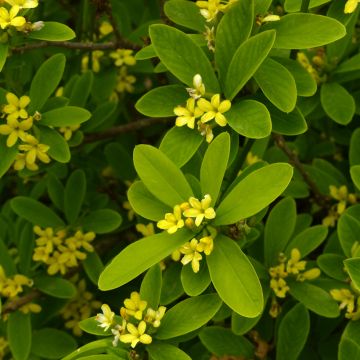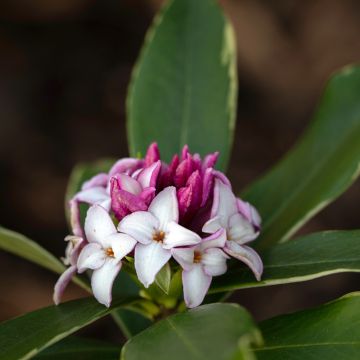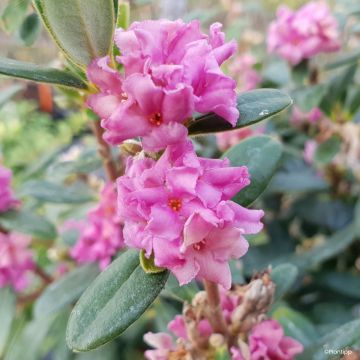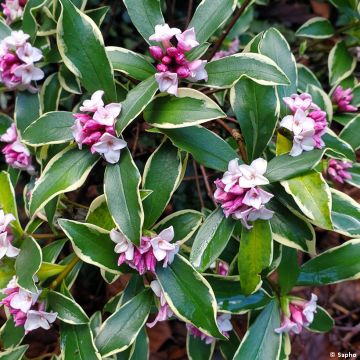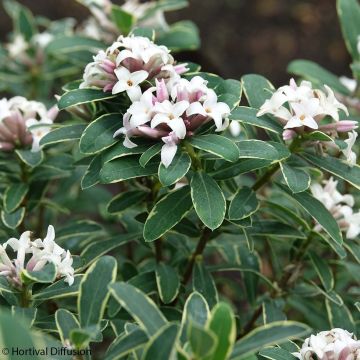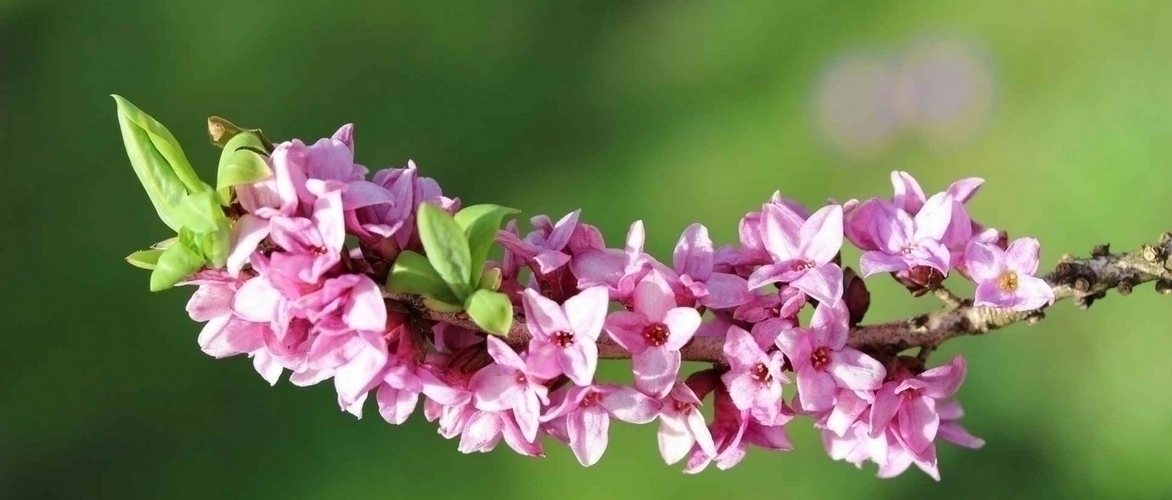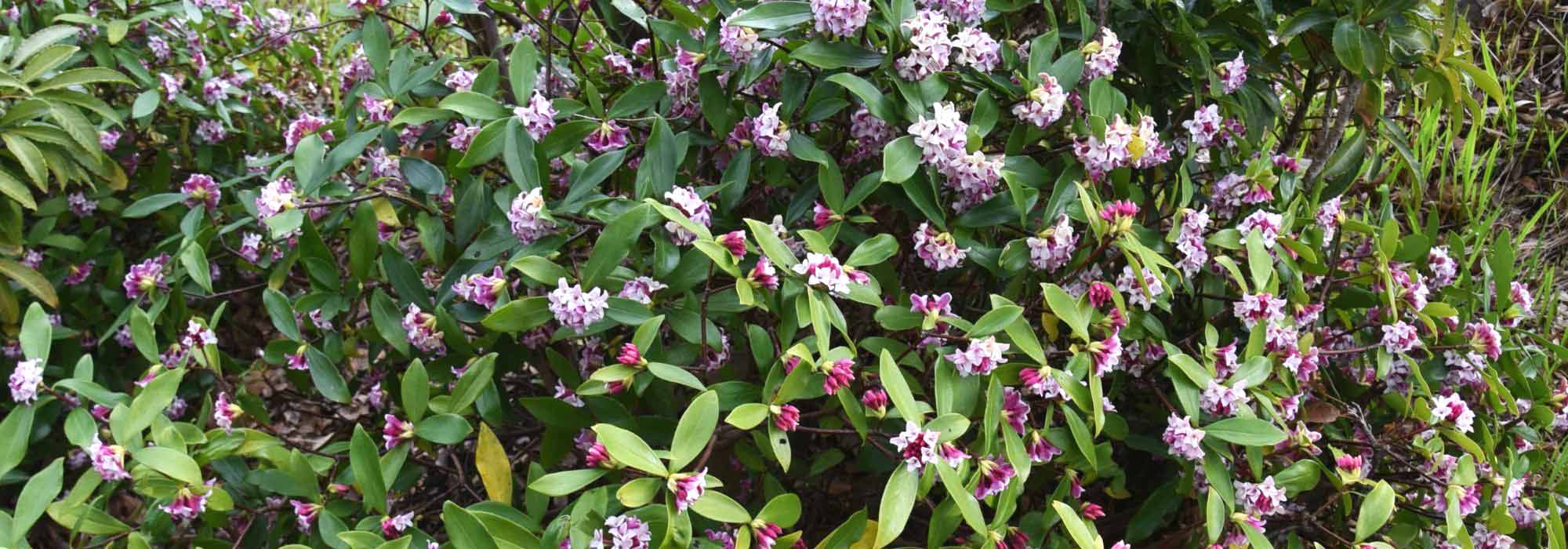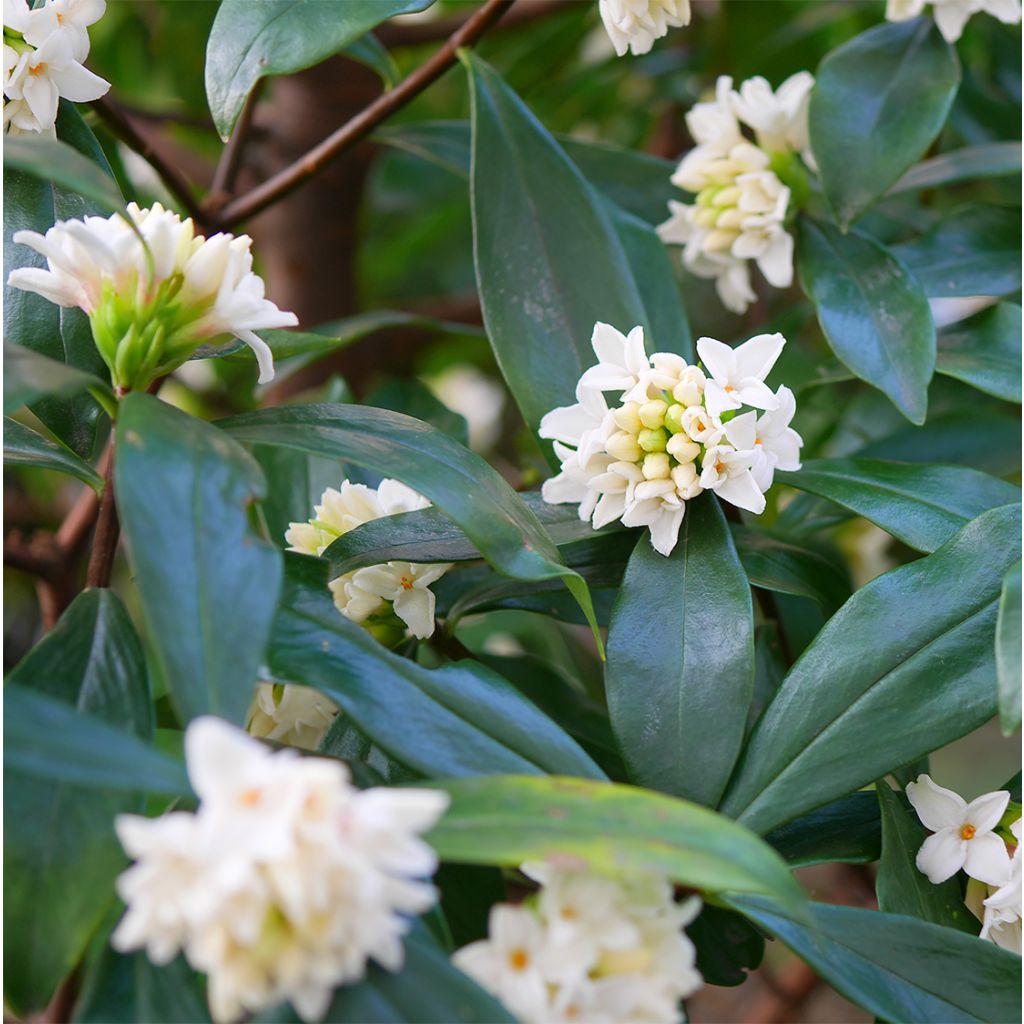

Daphne White Queen - Bois-joli
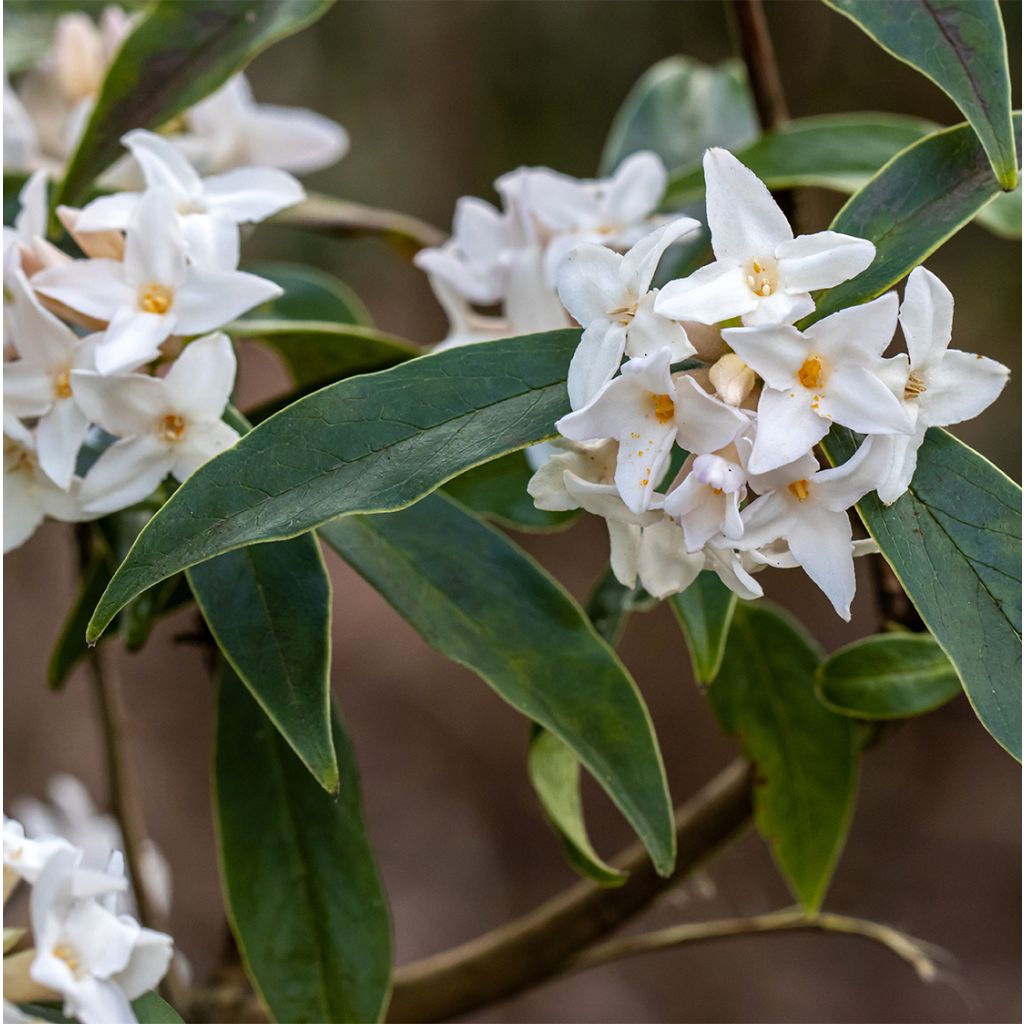

Daphne White Queen - Bois-joli
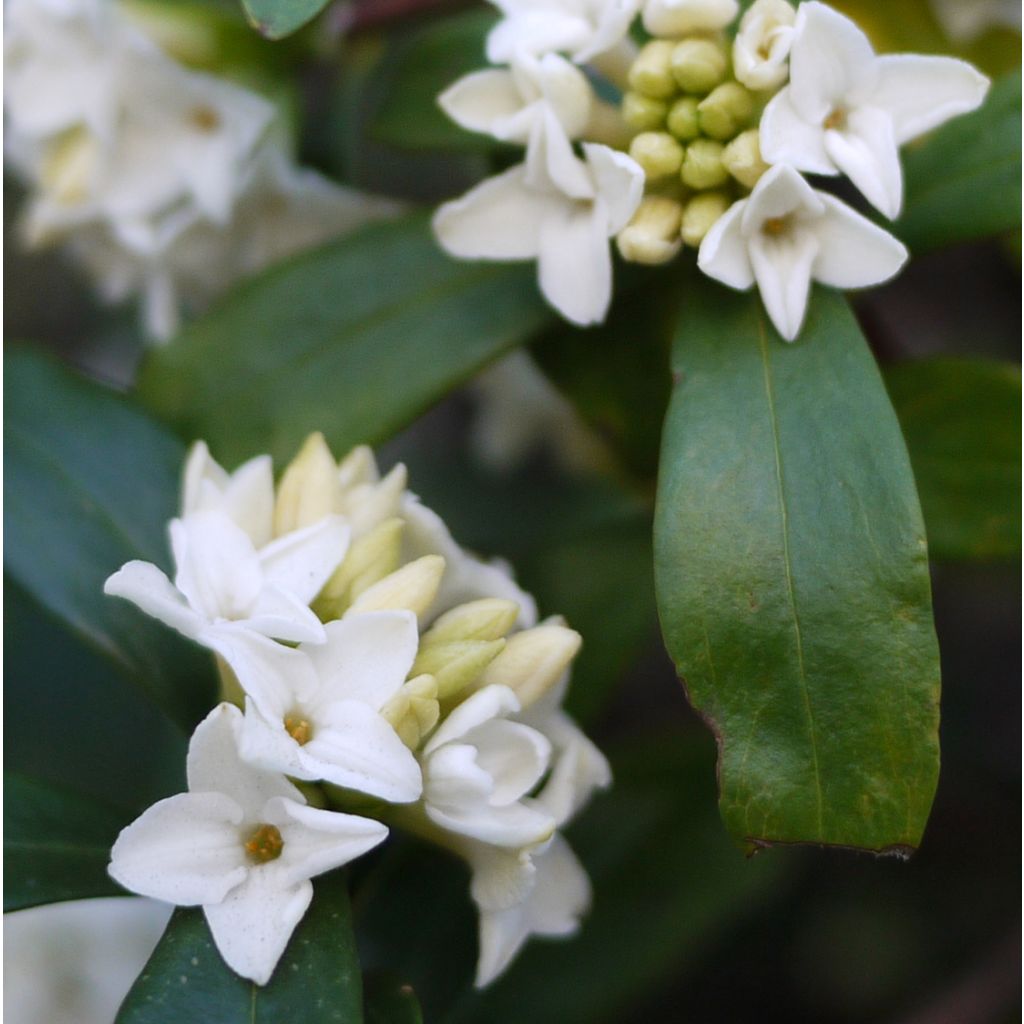

Daphne White Queen - Bois-joli
Daphne White Queen
Daphne acutiloba x sureil White Queen
Daphne White Queen
Special offer!
Receive a €20 voucher for any order over €90 (excluding delivery costs, credit notes, and plastic-free options)!
1- Add your favorite plants to your cart.
2- Once you have reached €90, confirm your order (you can even choose the delivery date!).
3- As soon as your order is shipped, you will receive an email containing your voucher code, valid for 3 months (90 days).
Your voucher is unique and can only be used once, for any order with a minimum value of €20, excluding delivery costs.
Can be combined with other current offers, non-divisible and non-refundable.
Why not try an alternative variety in stock?
View all →This plant carries a 24 months recovery warranty
More information
We guarantee the quality of our plants for a full growing cycle, and will replace at our expense any plant that fails to recover under normal climatic and planting conditions.
Would this plant suit my garden?
Set up your Plantfit profile →
Description
The Daphne White Queen is a variety of rarely cultivated daphne that will charm with its remarkably fragrant white flowering, from early spring onwards. It is a beautiful bush with a harmonious habit, adorned with beautiful intense green foliage, which remains attractive even when not in bloom. Sensitive to heavy frosts, this daphne appreciates mild and humid climates and will lose its foliage if it gets too cold. It deserves a prominent place near a pathway or entrance, or in a nice pot on the terrace, to enjoy its fragrance with every passing.
The Daphne White Queen is a horticultural hybrid obtained by cross-breeding Daphne acutiloba and D. sureil, both originating from China. Like all daphnes, it belongs to the family of Thymelaeaceae. It grows rather slowly, forming a small bush about 1.10 m (3 ft 7 in) high by 1.30 m (4 ft 4 in) wide, with a dense and harmonious habit, without the stiffness that characterises some other daphnes. It bears more or less evergreen foliage in winter, evergreen in regions where it only freezes very little or in a cold greenhouse. Its elongated lanceolate leaves, with a leathery texture, measure about 5cm (2 in) long. Their colour ranges from light green to quite dark satin green.
Flowering in March-April, this plant produces white, tubular flowers with four pointed lobes arranged in corymbs or small rounded bouquets on the upper part of its stems. These flowers have a sweet fragrance that attracts pollinating insects and are highlighted by the plant's intense green colour. After pollination, the plant forms small, round, light red fruits that are quite decorative. However, it is essential to note that the fruits are highly toxic, and the plant's sap can cause irritation to mucous membranes and skin.
In mild climates, the 'White Queen' bush will bloom abundantly in gently sunny to semi-shady areas of the garden, as long as it benefits from a light and humus-rich soil that remains moist in summer. It tolerates slightly limestone soils quite well. For example, place it in a bed composed of low-growing shrubs with staggered flowering times, such as deutzias or Chinese azaleas. It will also have a great effect on a terrace or in a large rock garden, always in semi-shade, planted with spring bulbs for example (crocuses, daffodils, tulips). Position it in groups of 3 plants not far from the front door of the house or near a passageway, to fully enjoy its charm.
Note: Daphnes can be high-maintenance and difficult to cultivate. They are best suited for experienced gardeners.
Daphne White Queen in pictures
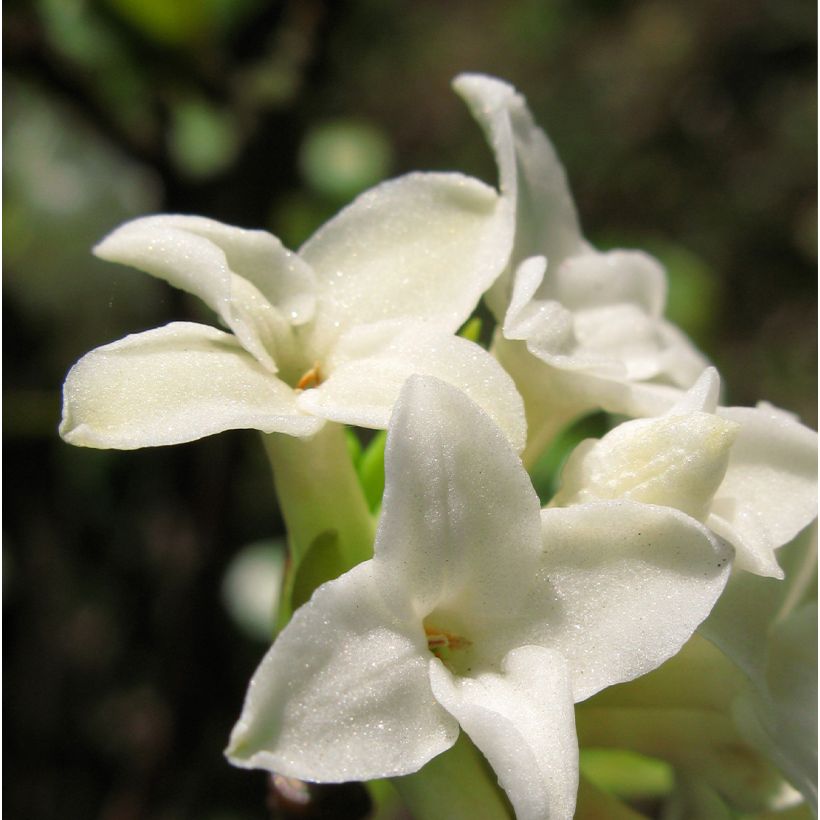

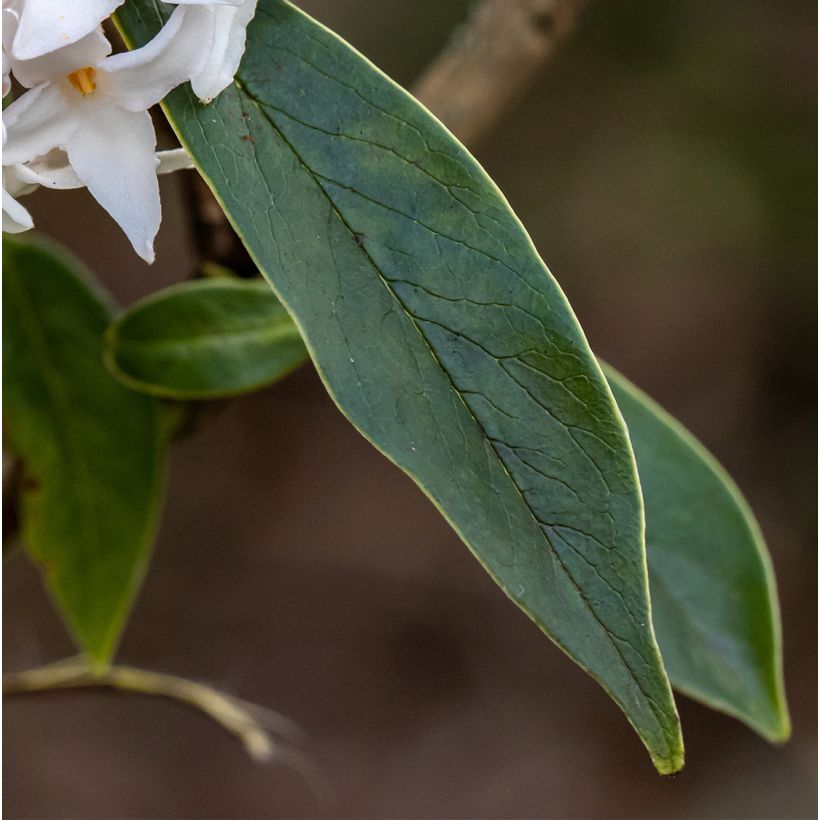

Plant habit
Flowering
Foliage
Safety measures
Botanical data
Daphne
acutiloba x sureil
White Queen
Thymelaceae
Daphne White Queen
Cultivar or hybrid
ingestion
Cette plante est toxique si elle est ingérée volontairement ou involontairement.
Ne la plantez pas là où de jeunes enfants peuvent évoluer, et lavez-vous les mains après l'avoir manipulée.
Pensez à conserver l'étiquette de la plante, à la photographier ou à noter son nom, afin de faciliter le travail des professionnels de santé.
Davantage d'informations sur https://plantes-risque.info
Other Daphne
View all →Planting and care
The Daphne White Queen should be planted in spring in a fresh, light, humus-rich and well-drained soil, slightly chalky to slightly acidic. It appreciates a sunny but not scorching exposure or partial shade, and is as wary of intense sunlight as it is of hot summer temperatures. Pruning is unnecessary except for dead branches, as it is quite sensitive like many daphnes. Do not let the soil dry out, apply an organic mulch or plant heathers to protect the young plant. Just like Daphne odora, it can be affected by fungus; Treat it preventively with a fungicide in spring.
Planting period
Intended location
Care
Planting & care advice
This item has not been reviewed yet - be the first to leave a review about it.
Haven't found what you were looking for?
Hardiness is the lowest winter temperature a plant can endure without suffering serious damage or even dying. However, hardiness is affected by location (a sheltered area, such as a patio), protection (winter cover) and soil type (hardiness is improved by well-drained soil).

Photo Sharing Terms & Conditions
In order to encourage gardeners to interact and share their experiences, Promesse de fleurs offers various media enabling content to be uploaded onto its Site - in particular via the ‘Photo sharing’ module.
The User agrees to refrain from:
- Posting any content that is illegal, prejudicial, insulting, racist, inciteful to hatred, revisionist, contrary to public decency, that infringes on privacy or on the privacy rights of third parties, in particular the publicity rights of persons and goods, intellectual property rights, or the right to privacy.
- Submitting content on behalf of a third party;
- Impersonate the identity of a third party and/or publish any personal information about a third party;
In general, the User undertakes to refrain from any unethical behaviour.
All Content (in particular text, comments, files, images, photos, videos, creative works, etc.), which may be subject to property or intellectual property rights, image or other private rights, shall remain the property of the User, subject to the limited rights granted by the terms of the licence granted by Promesse de fleurs as stated below. Users are at liberty to publish or not to publish such Content on the Site, notably via the ‘Photo Sharing’ facility, and accept that this Content shall be made public and freely accessible, notably on the Internet.
Users further acknowledge, undertake to have ,and guarantee that they hold all necessary rights and permissions to publish such material on the Site, in particular with regard to the legislation in force pertaining to any privacy, property, intellectual property, image, or contractual rights, or rights of any other nature. By publishing such Content on the Site, Users acknowledge accepting full liability as publishers of the Content within the meaning of the law, and grant Promesse de fleurs, free of charge, an inclusive, worldwide licence for the said Content for the entire duration of its publication, including all reproduction, representation, up/downloading, displaying, performing, transmission, and storage rights.
Users also grant permission for their name to be linked to the Content and accept that this link may not always be made available.
By engaging in posting material, Users consent to their Content becoming automatically accessible on the Internet, in particular on other sites and/or blogs and/or web pages of the Promesse de fleurs site, including in particular social pages and the Promesse de fleurs catalogue.
Users may secure the removal of entrusted content free of charge by issuing a simple request via our contact form.
The flowering period indicated on our website applies to countries and regions located in USDA zone 8 (France, the United Kingdom, Ireland, the Netherlands, etc.)
It will vary according to where you live:
- In zones 9 to 10 (Italy, Spain, Greece, etc.), flowering will occur about 2 to 4 weeks earlier.
- In zones 6 to 7 (Germany, Poland, Slovenia, and lower mountainous regions), flowering will be delayed by 2 to 3 weeks.
- In zone 5 (Central Europe, Scandinavia), blooming will be delayed by 3 to 5 weeks.
In temperate climates, pruning of spring-flowering shrubs (forsythia, spireas, etc.) should be done just after flowering.
Pruning of summer-flowering shrubs (Indian Lilac, Perovskia, etc.) can be done in winter or spring.
In cold regions as well as with frost-sensitive plants, avoid pruning too early when severe frosts may still occur.
The planting period indicated on our website applies to countries and regions located in USDA zone 8 (France, United Kingdom, Ireland, Netherlands).
It will vary according to where you live:
- In Mediterranean zones (Marseille, Madrid, Milan, etc.), autumn and winter are the best planting periods.
- In continental zones (Strasbourg, Munich, Vienna, etc.), delay planting by 2 to 3 weeks in spring and bring it forward by 2 to 4 weeks in autumn.
- In mountainous regions (the Alps, Pyrenees, Carpathians, etc.), it is best to plant in late spring (May-June) or late summer (August-September).
The harvesting period indicated on our website applies to countries and regions in USDA zone 8 (France, England, Ireland, the Netherlands).
In colder areas (Scandinavia, Poland, Austria...) fruit and vegetable harvests are likely to be delayed by 3-4 weeks.
In warmer areas (Italy, Spain, Greece, etc.), harvesting will probably take place earlier, depending on weather conditions.
The sowing periods indicated on our website apply to countries and regions within USDA Zone 8 (France, UK, Ireland, Netherlands).
In colder areas (Scandinavia, Poland, Austria...), delay any outdoor sowing by 3-4 weeks, or sow under glass.
In warmer climes (Italy, Spain, Greece, etc.), bring outdoor sowing forward by a few weeks.































